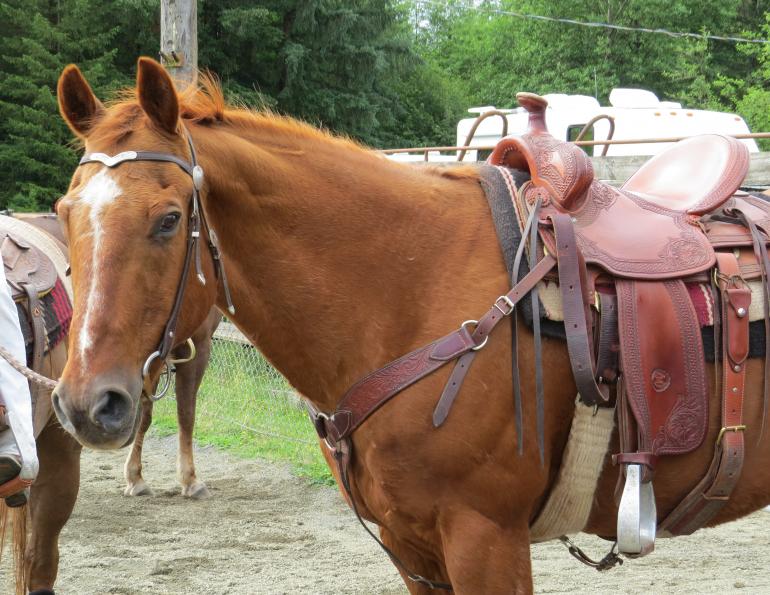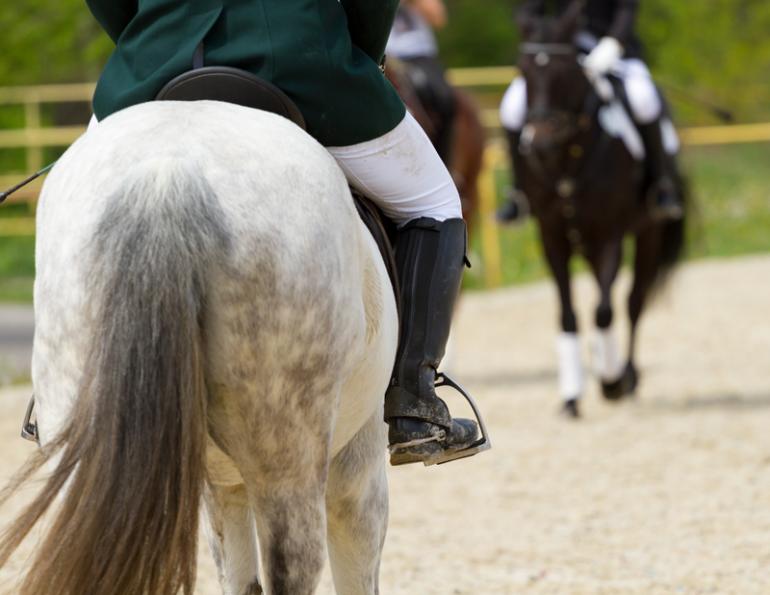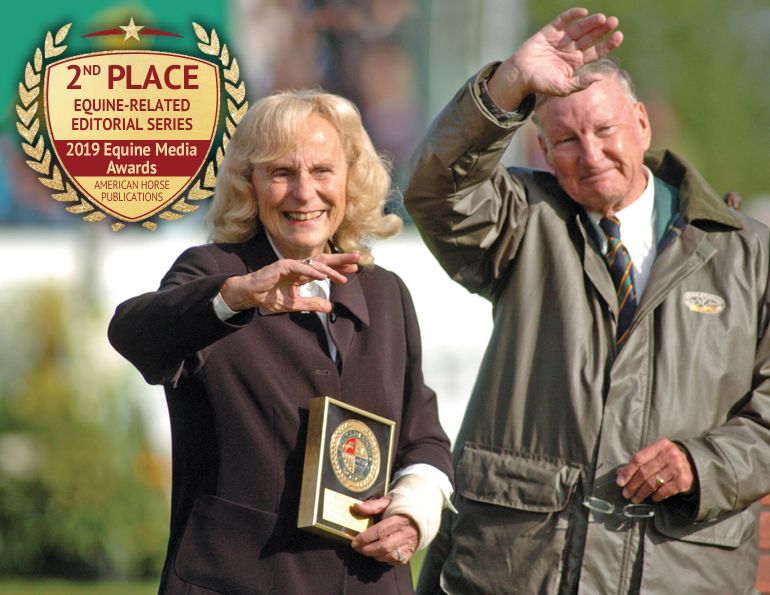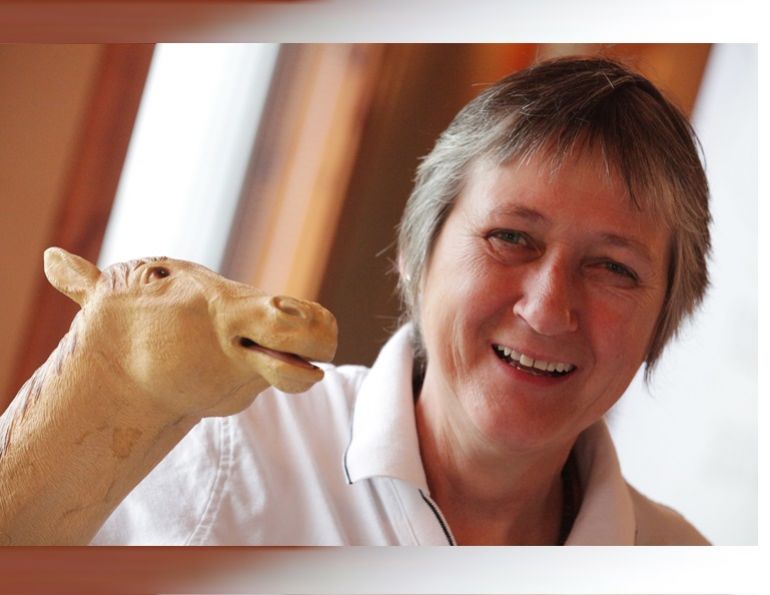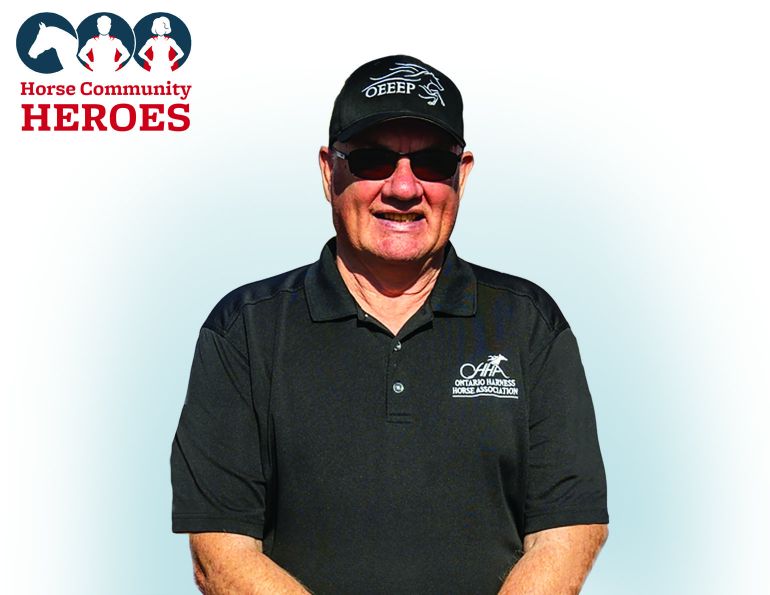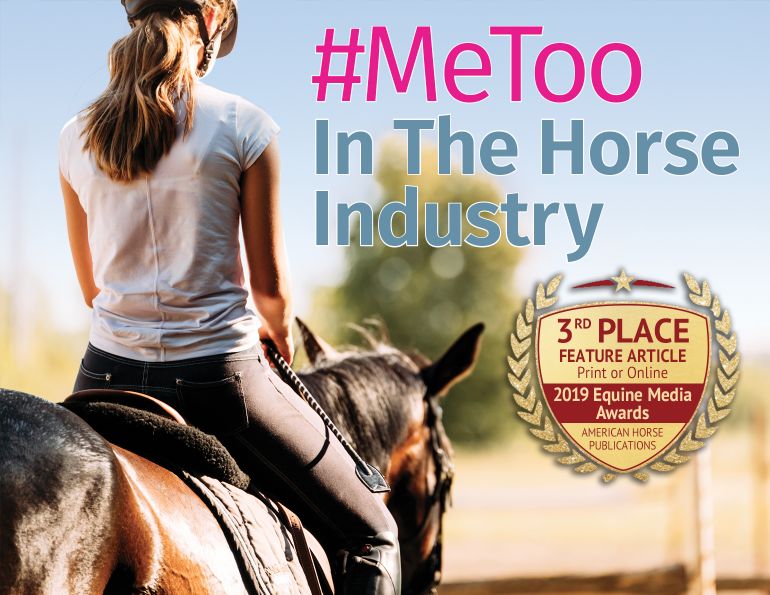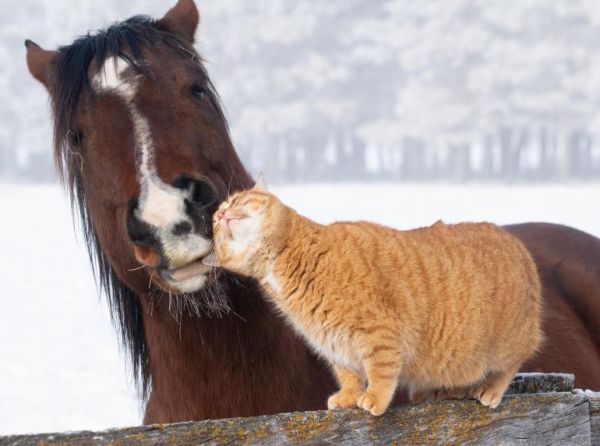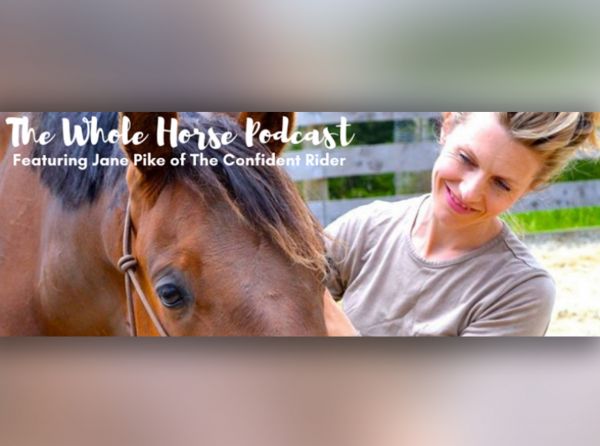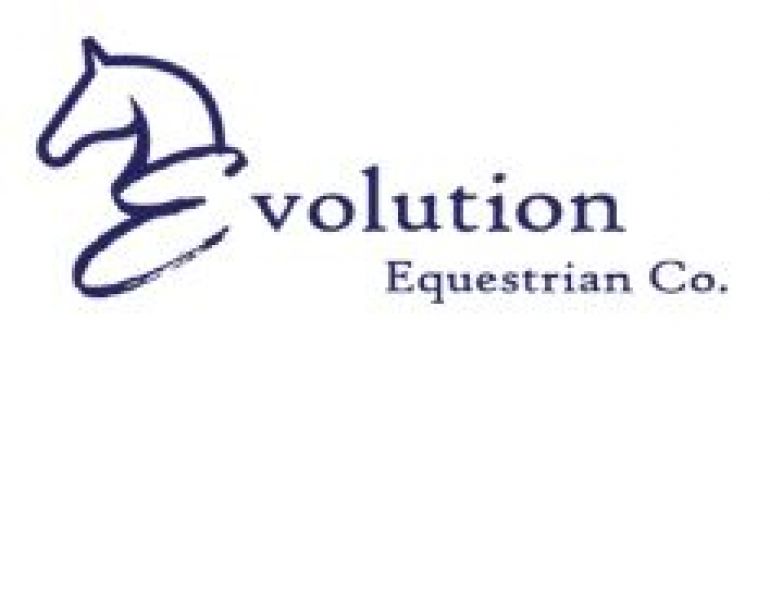By Ceileidh Sager
As riders, we often marvel at the placid, seemingly bombproof police horses we encounter on our city streets. Clearly police horses are put through intensive training to prepare them for patrol work, but what about their riders?
In speaking with Sargent Kristopher McCarthy of the Toronto Police Mounted Unit, I learned that the city’s mounted unit has taught officers to ride using traditional cavalry methods for over a century. Recently, the Toronto Police Mounted Unit decided to incorporate English equitation standards into their officer training program.
So, Sergeant Kristopher McCarthy and Training Constables Harold Williamson, Richard Cooper, and Joel Houston took their unit’s training to the next level, becoming nationally certified riding instructors. The four officers received their Equine Canada Instructor of Beginners certification on September 10, 2012.
A few years ago, some of these men had never ridden a horse before. Now they’re jumping 2’6” courses with ease and performing half-passes and turns on the forehand, in addition to keeping the streets of Toronto safe.
Sergeant Kristopher McCarthy was kind enough to tell us a little bit about his dynamic career with the Toronto Police Mounted Unit, and how this new initiative will contribute to a bright future for his unit’s rider training program.
Horse Journals: How, when, and why did you start working with the Toronto Police Service’s Mounted Unit?
Sergeant McCarthy: When I was a child, there were three professions that I aspired to: teacher, police officer, and veterinarian. I discovered that I get to do all three in my current job as a police officer.
I did my training program back in 1999, and was a police constable for about four years, and then I started training the horses and assisted in training the riders.
|
Sergeant Kristopher McCarthy says he “has better respect as to how the equine world operates,” after completing his Instructor of Beginners certification. |
Did you have any previous experience working with horses?
I had never ridden a horse a day in my life!
What sort of specialized horse/riding training did you undergo when you joined the Mounted Unit?
We have our own training program and that training program is a select few training constables (four or so) with a training sergeant. Their job is to take our new horses and train them so that they’re able to be ridden and able to be police horses. As well, they assist in the training of new officers who are learning how to ride.
We offer a 15-week training program, and it’s pretty extensive. You average about 35 hours a week in the saddle. It is said that by the end of the 15-week term, you have between three and five years of riding experience. We throw a lot at them in a very short period of time.
What did the Instructor of Beginner certification process entail?
I always thought it would be a great idea to actually have certified trainers. We’ve trained ourselves now for almost 125 years. We’ve been extremely successful as a unit, so I thought why not add that much more credibility to our name and make ourselves certified trainers.
The four of us started doing a lot of training. We had to get our [Equine Canada] Level 6 riding certification. Once we got our Level 6 riding, we went to get our Instructor certification.
Will being a nationally certified riding instructor help you to better perform your job on a daily basis?
I definitely think it will. We have a better respect for how the equine world operates.
All four of us are committed to carrying this training forward. It doesn’t happen overnight, obviously, but because of our now more diverse background, we can apply those instructional aids that we did not have in the past, utilize them, and move forward.
|
Constable Richard Cooper, riding Brock, is one of four officers in the Toronto Police Mounted Unit who have recently become nationally certified riding instructors. |
One of the most difficult things for me was the language or terminology barrier. We may not call it what the Pony Club standards call it, but we are basically doing the exact same thing.
Do you use cavalry terminology?
All our training was based on the old cavalry. It was interesting to do our Level 6 when the first [Equine Canada] instructors came and saw our cavalry saddles. That’s what we were jumping our horses with, and [the instructors] were looking at this equipment as if to say, “Are you sure?!”
How will this initiative translate into more effective management of situations involving the need for crowd control?
I think any single time you can improve your riding skills it will obviously transfer over to every part of your riding on a day-to-day basis. So, will that make us better at the job we are doing? I say yes.
When you’re in a crowd control situation, it’s not really about looking pretty - it’s about getting the job done. When we train our horses, we train them in all elements. They have a lot of dressage movements. A lot of our crowd control maneuvers involve side passing, leg yielding, turning on the forehand - they are very good at doing those maneuvers. We are pretty diverse in that way - our horses are very well rounded.
Is there anything else you would like our readers to know about the Toronto Police Service’s Mounted Unit?
We’re happy with our success, we’re quite happy that we engaged in this project. It’s always nice to gain partnership in the equine world, and that’s how I view it - as a partnership. We’re making sure there is a standardization of training across the board, which can only improve riders, horsemanship, and the horses themselves.
Main Article Photo: Sergeant James Patterson - The Toronto Police Mounted Unit training program is conducted by a select few training constables and a training sergeant. Here, Constable Harold Williamson (centre) is pictured training new recruits in Rouge Valley, ON.



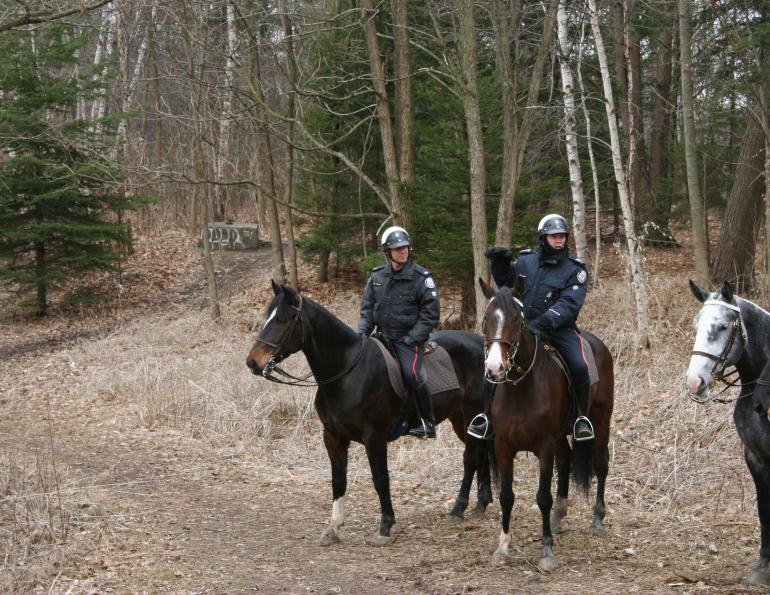
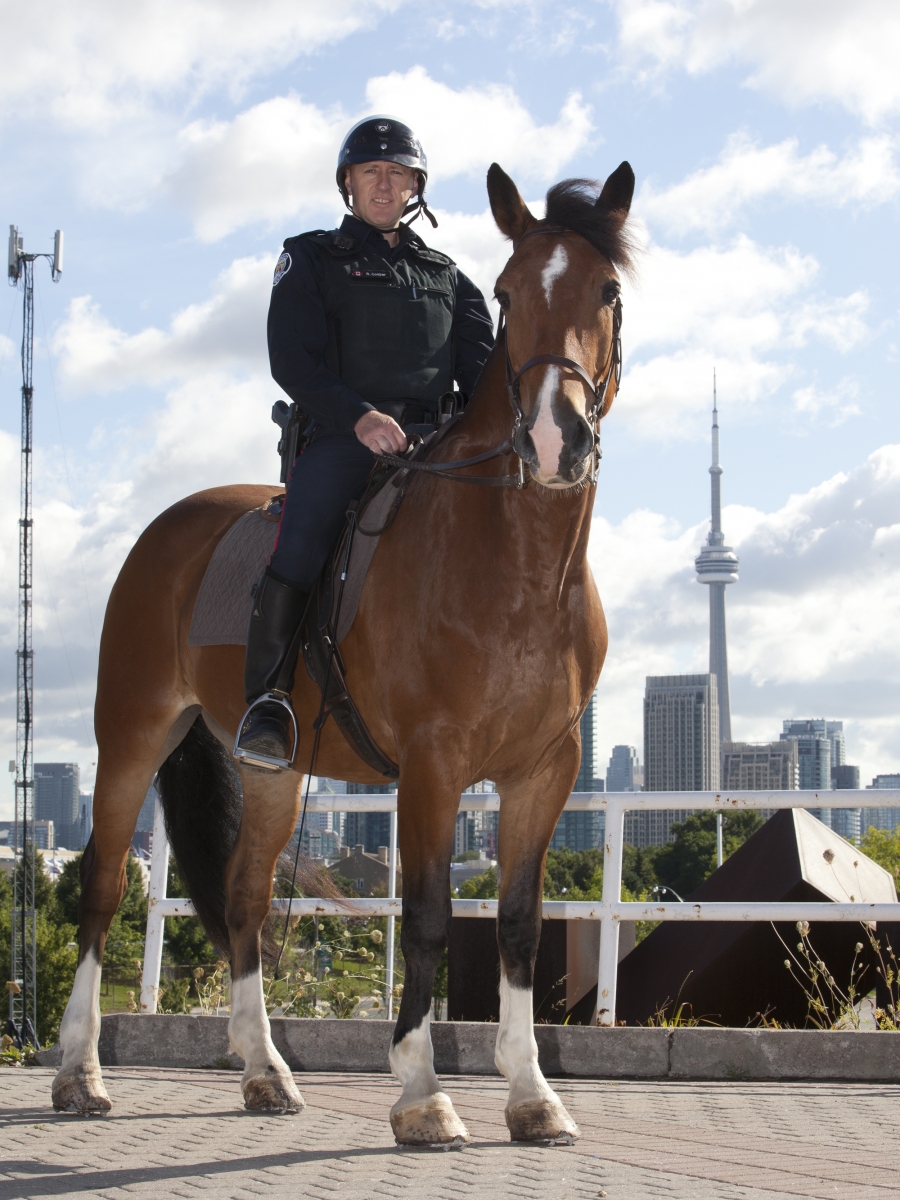 Photo: Anne de Haas
Photo: Anne de Haas